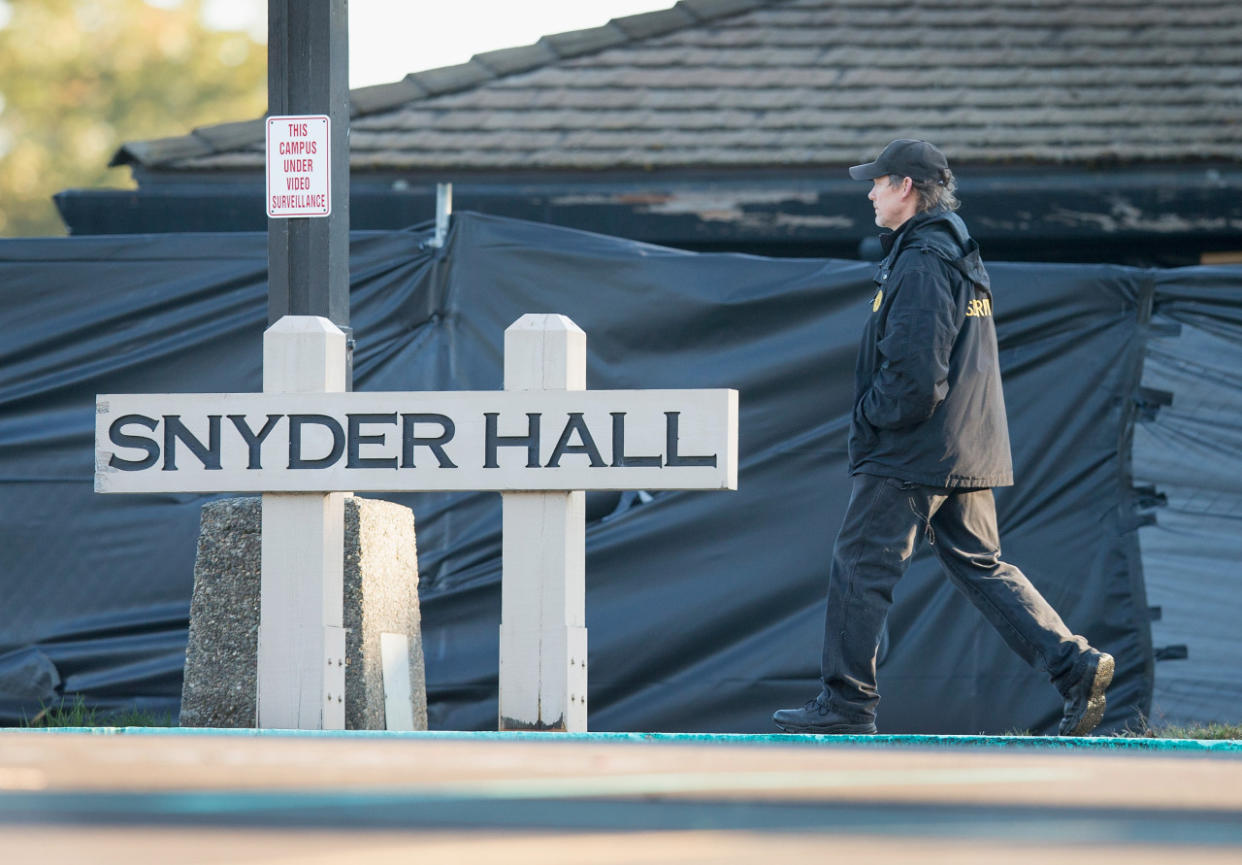Threats to Pa. and Calif. Schools Highlight ‘Contagion Factor’ of Mass Shootings

Did the Oregon shooting beget two new school-shooting threats — one at a school in Northern California and the other at colleges in the Philadelphia area? According to a study, the answer is yes. (Photo: Scott Olson/Getty Images)
Last week brought the horrific shooting at Umpqua Community College in Roseburg, Ore., which left nine dead and nine injured, several critically.
On Saturday, investigators in Sonora, Calif., arrested four male students, alleging that they were plotting a shooting at their high school.
On Sunday, the Federal Bureau of Investigation (FBI) and the Bureau of Alcohol, Tobacco, Firearms and Explosives (ATF) notified colleges in the Philadelphia area that an anonymous threat had been placed on the website 4chan, warning of an attack on a Philadelphia-area college at 1 pm CST today.
On Monday, counselors were on hand to meet with the students of Summerville High School, where the thwarted California attack was planned, and schools such as Philadelphia’s University of Pennsylvania have announced increased security on campus.
A study published in July of this year in the academic journal PLOS One poignantly foretold the phenomenon currently dominating the American news cycle of one school shooting seemingly begetting evidence of plots of others.
The study concluded that mass killings involving firearms “are incented by similar events in the immediate past,” with an average temporary increase in probability of 13 days, with each incident inciting at least 0.30 new incidents. School shootings specifically are also found to have a 13-day contagion factor leading to 0.22 new incidents. The researchers note that on average, one school shooting happens per month in the United States.
Related: Texas Murders Expose Fatal Link Between Gun Sales Loopholes and Domestic Violence
Sherry Towers, PhD, a research professor at Arizona State University and the study’s lead author, told CNN that she believes “national news media attention is like a ‘vector’ that reaches people who are vulnerable,” essentially “infecting” them the same way a contagious disease would and then making them more likely to commit a similar crime. She notes that shootings that receive only local media coverage do not yield a contagion effect; only ones garnering national press have the ability to “infect” people who might already be predisposed to committing such a crime.
Towers calls the epidemic of shootings infecting the United States a “public health crisis.”
Her work in PLOS One also notes that two-thirds of school shooters procure their firearms from either their own home or that of a relative, and that gun ownership significantly raises the risk for not only homicide in the home but homicide rates in general.
Towers and her colleagues concluded that while firearms ownership is significantly associated with the incidence of mass killings with firearms, “[o]nce state prevalence of firearm ownership has been taken into account, there is no significant association between state incidence of these events and state prevalence of mental illness or ranking of strength of firearm legislation.”
Significantly, Towers’s study found “no significant association between the rate of school and mass shootings and state prevalence of mental illness.”
In other words, fewer guns lead to fewer mass shootings, regardless of mental illness — and fewer mass shootings make for fewer future shootings.
Read This Next: John Oliver Breaks Down the Mental Health Excuse for Mass Shootings

